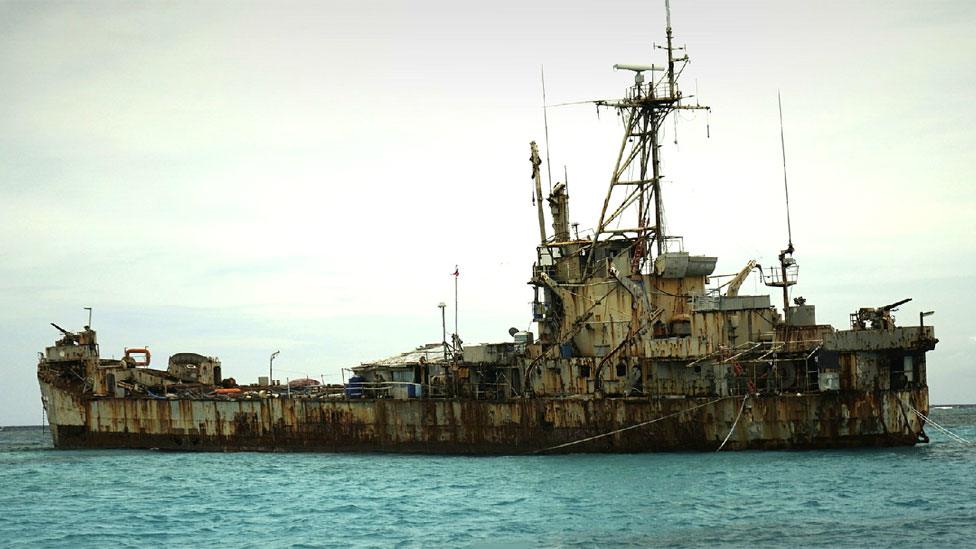What is the South China Sea dispute?
- Published
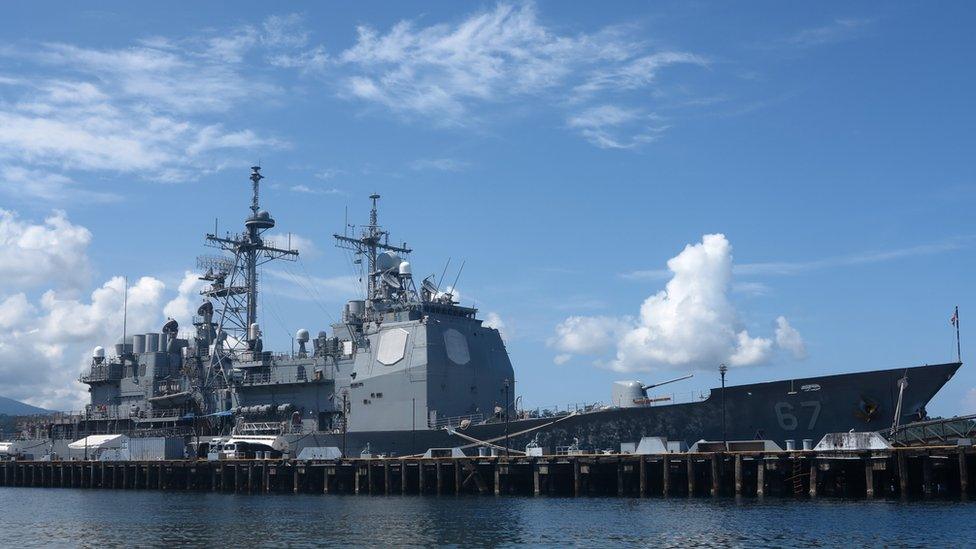
China, Vietnam, the Philippines, Taiwan, Malaysia and Brunei all have competing claims over territory in the South China Sea
Countries have wrangled over territory in the South China Sea for centuries, but tension has grown in recent years.
In particular, China's sweeping claims - which include sovereignty claims over land parcels and their adjacent waters - have angered competing claimants like Vietnam, the Philippines, Taiwan, Malaysia and Brunei.
The other countries have staked claims on islands and various zones in the sea, such as the Paracels and the Spratlys.
China has backed its expansive claims with island-building and naval patrols. The US says it does not take sides in territorial disputes, but has sent military ships and planes near disputed islands in what it calls "freedom of navigation" operations.
Japan, which has no direct stake in the South China Sea, also provides ships and military equipment to claimants like Vietnam and the Philippines.
There are fears that the area is becoming a flashpoint, with potentially serious global consequences.
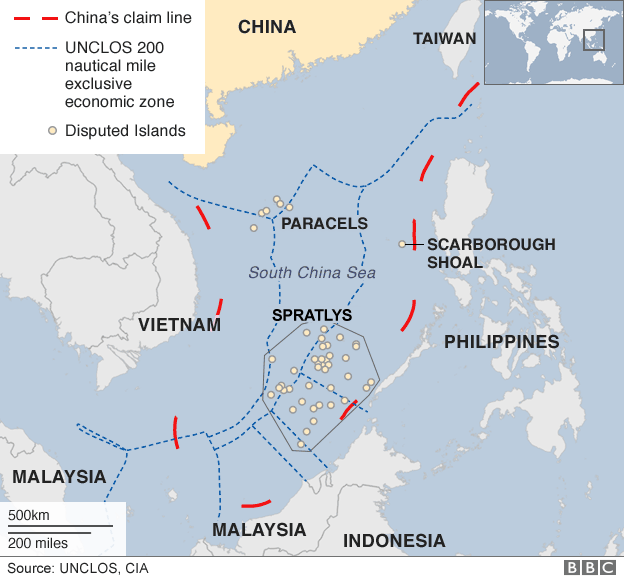
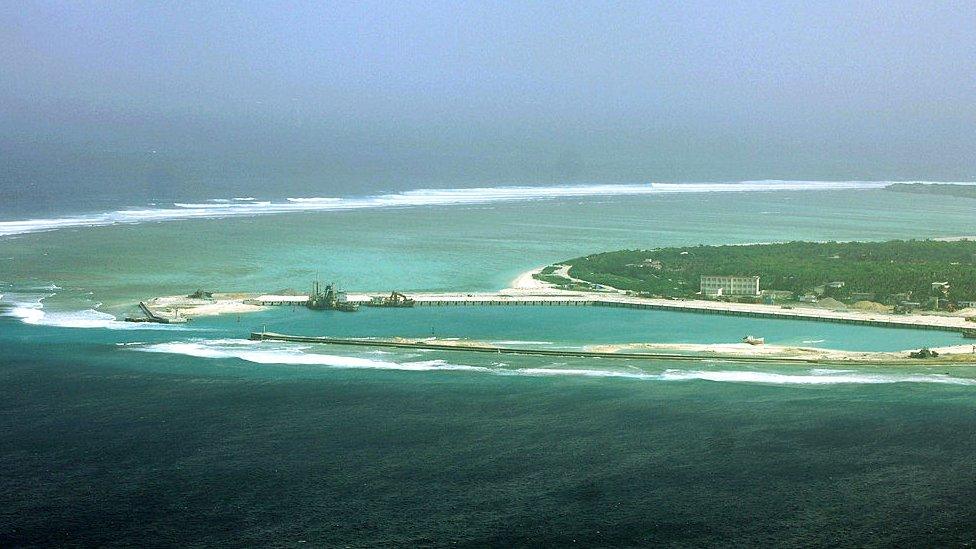
The Paracels and the Spratlys are two island chains claimed in whole or in part by a number of countries
Why are countries interested in these waters?
The South China Sea is a major shipping route. The United Nations Conference on Trade and Development estimates that over 21% of global trade, amounting to $3.37 trillion, transited through these waters in 2016.
It is also home to rich fishing grounds that provide for the livelihoods of millions of people across the region. More than half of the world's fishing vessels operate in this area.
Although largely uninhabited, the Paracels and the Spratlys may have reserves of natural resources around them. There has been little detailed exploration of the area, so estimates are largely extrapolated from the mineral wealth of neighbouring areas.
The nine-dash line and other claims
China claims by far the largest portion of territory in an area demarcated by its so-called "nine-dash line". The line comprises nine dashes which extends hundreds of miles south and east from its most southerly province of Hainan.
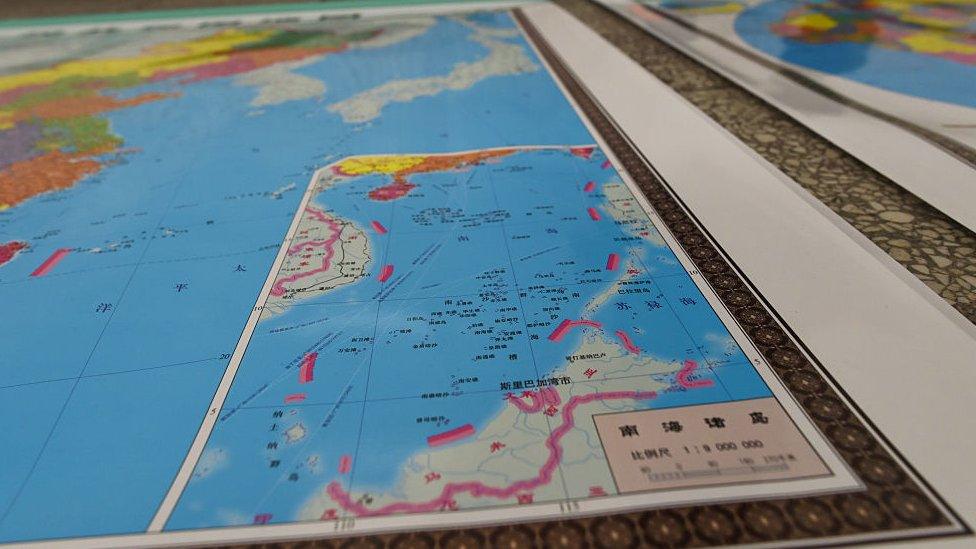
A map issued by Beijing shows the two island groups falling entirely within its territory
In 1947, China issued a map, external detailing its claims, and insists history backs up its claims - Beijing says its right to the area goes back centuries to when the Paracel and Spratly island chains were regarded as integral parts of the Chinese nation.
These claims are mirrored by Taiwan.
However, critics say China has not been specific about what exactly its claim includes, and that the nine-dash line that appears on Chinese maps encompassing almost the entirety of the South China Sea includes no coordinates.
It is also not clear whether China claims only land territory within the nine-dash line, or all the maritime space within it as well.

Both the Philippines and China lay claim to the Scarborough Shoal, or Huangyan Island as it is known in China
Vietnam hotly disputes China's historical account, saying China had never claimed sovereignty over the islands before the 1940s. Vietnam says it has actively ruled over both the Paracels and the Spratlys since the 17th Century - and has the documents to prove it.
The other major claimant to the area is the Philippines, which invokes its geographical proximity to the Spratly Islands as the main basis of its claim for part of the grouping.
Both the Philippines and China also lay claim to the Scarborough Shoal (known as Huangyan Island in China) - a little more than 100 miles (160km) from the Philippines and 500 miles from China.
Malaysia and Brunei also lay claim to territory in the South China Sea that they say falls within their economic exclusion zones, as defined by the United Nations Convention on the Law of the Sea, or UNCLOS.
Brunei does not claim any of the disputed islands, but Malaysia claims a small number of islands in the Spratlys.

Serious clashes
The most serious trouble in recent decades has flared between Vietnam and China, and there have also been stand-offs between the Philippines and China. Some of the incidents include:
In 1974, the Chinese seized the Paracels from Vietnam, killing more than 70 Vietnamese troops.
In 1988, the two sides clashed in the Spratlys, with Vietnam again coming off worse, losing about 60 sailors.
In early 2012, China and the Philippines engaged in a lengthy maritime stand-off, accusing each other of intrusions in the Scarborough Shoal.
Unverified claims that the Chinese navy sabotaged two Vietnamese exploration operations in late 2012 led to large anti-China protests on Vietnam's streets.
In January 2013, Manila said it was taking China to a UN tribunal under the auspices of the UN Convention on the Laws of the Sea, to challenge its claims.
In May 2014, the introduction by China of a drilling rig into waters near the Paracel Islands led to multiple collisions between Vietnamese and Chinese ships.
In June 2019, Manila accused a Chinese trawler of ramming a Filipino fishing boat with 22 people on board. The Filipinos were rescued by the Vietnamese.
In early 2023, the Philippines said Chinese vessels have been shining lasers at Filipino boats to temporarily blind their crew. They also accuse the Chinese of dangerous manoeuvres by sailing too close or blocking the Filipinos' path.

Hollywood: Caught in the controversy
Claimant countries have been banning films depicting contested territorial claims in the South China Sea.
Most recently, Vietnam banned the upcoming Barbie film - due for release in July 2023 - over its portrayal of a map that includes the nine-dash line. Senators in the Philippines also criticised the map's inclusion in the movie. It should come with "an explicit disclaimer that the nine-dash line is a figment of China's imagination", according to one lawmaker.
Korean pop super group Blackpink also came under fire in Vietnam in July 2023 after their concert promoter's website featured a map with Beijing's nine-dash line.

Allow X content?
This article contains content provided by X. We ask for your permission before anything is loaded, as they may be using cookies and other technologies. You may want to read X’s cookie policy, external and privacy policy, external before accepting. To view this content choose ‘accept and continue’.

In 2019, DreamWorks' animated children's movie Abominable also incurred the ire of several South East Asian countries. Vietnam pulled the film, Malaysia cut the scene depicting the map, while the Philippines called for a DreamWorks boycott. Abominable is the first co-production between the US company and China's Pearl Studio production firm.
In 2018, Vietnamese censors cut a second-long clip in Crazy Rich Asians featuring a designer bag with a world map that showed the disputed area under Beijing's control.
Have they tried to reach a resolution?
China prefers bilateral negotiations with the other parties. But many of its neighbours argue that China's relative size and clout give it an unfair advantage.
Some countries have argued that China should negotiate with Asean (the Association of South East Asian Nations), a 10-member regional grouping that consists of Thailand, Indonesia, Malaysia, the Philippines, Singapore, Brunei, Laos, Vietnam, Myanmar and Cambodia.
However, China is opposed to this, while Asean is also divided over how to resolve the dispute.

China has opposed negotiations with Asean, a 10-member regional grouping
The Philippines has sought international arbitration instead. In 2013, it announced it would take China to an arbitration tribunal under the auspices of the UN Convention on the Laws of the Sea, to challenge its claims.
In July 2016, the tribunal backed the Philippines' case, saying China had violated the Philippines' sovereign rights.
China had boycotted the proceedings and called the ruling "ill-founded". It says it will not be bound by it.
- Published26 April 2023
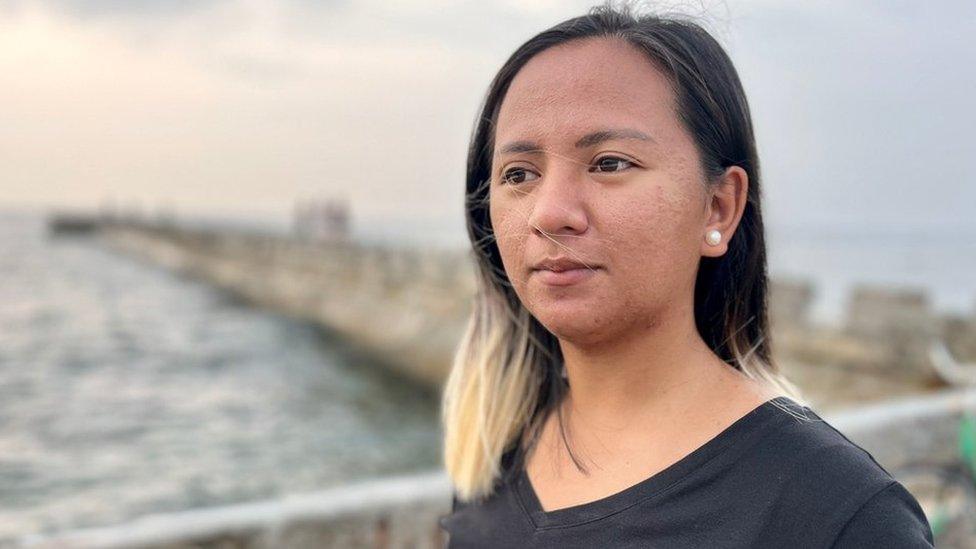
- Published28 April 2023
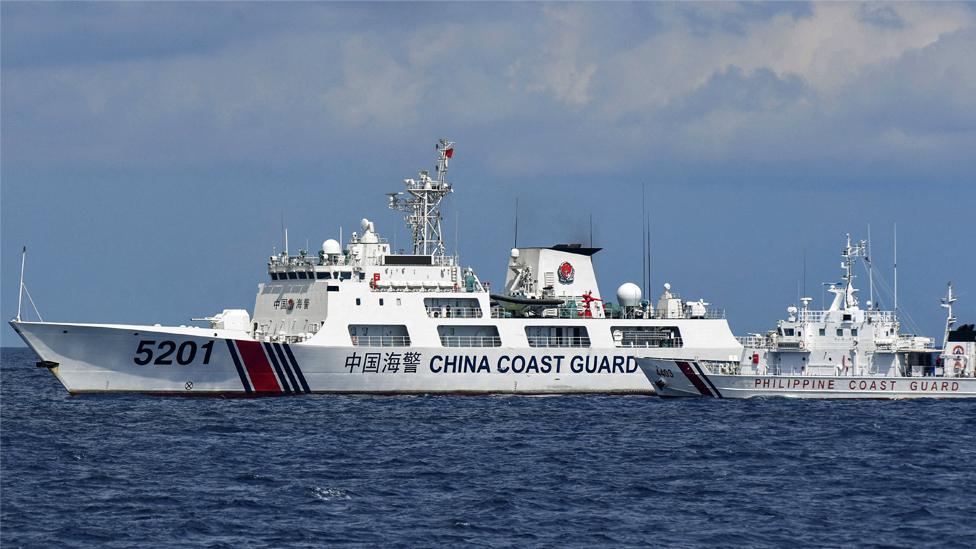
- Published16 February 2023
